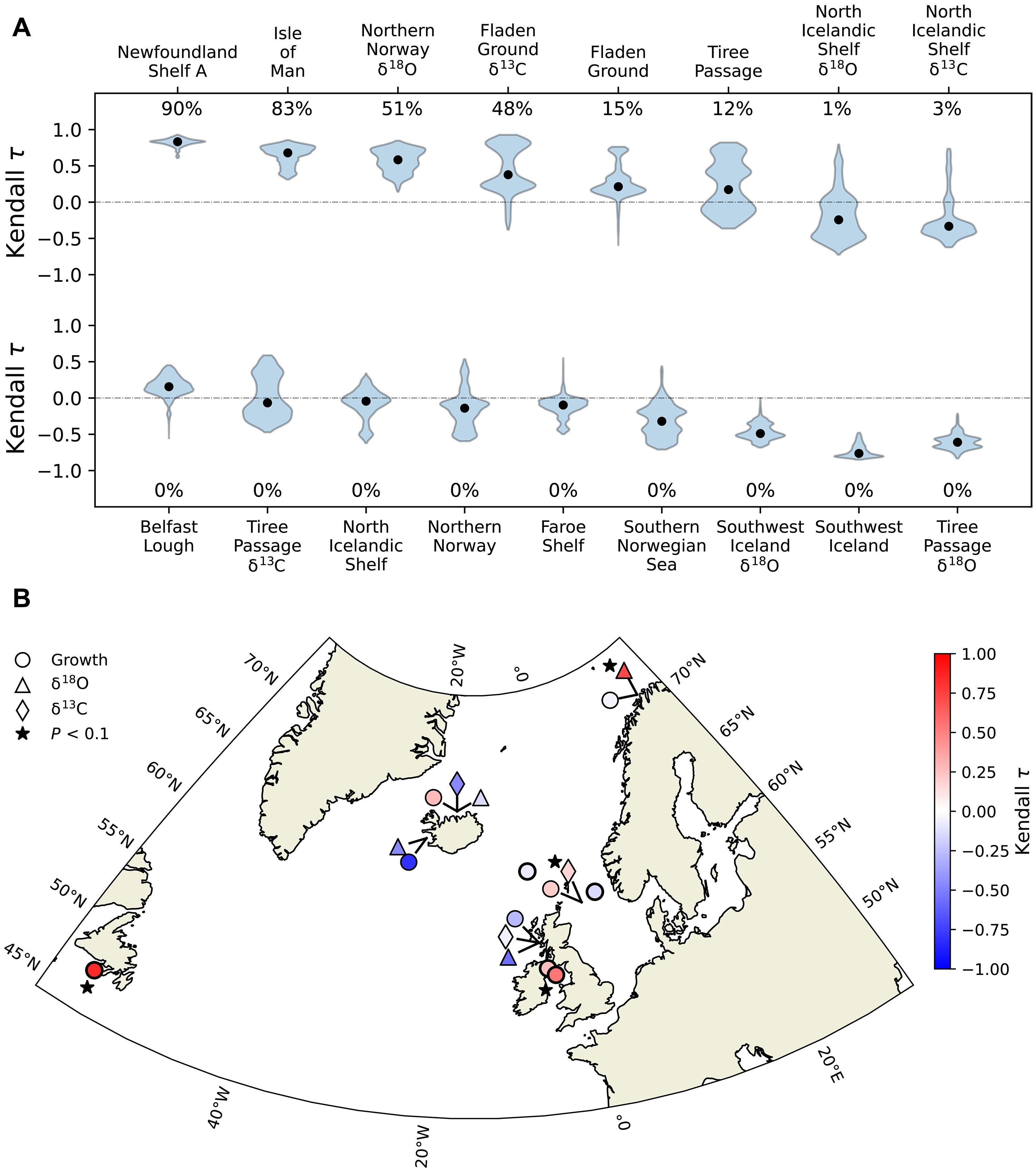Recent and early 20th century destabilization of the subpolar North Atlantic recorded in bivalves
IF 12.5
1区 综合性期刊
Q1 MULTIDISCIPLINARY SCIENCES
引用次数: 0
Abstract
Climate change risks triggering abrupt weakening in two climatically important North Atlantic Ocean circulation elements, the subpolar gyre and the Atlantic Meridional Overturning Circulation (AMOC). Loss of AMOC stability has been inferred from slowing recovery of temperature and salinity fluctuations over time. However, observational datasets, constructed from records with sparse spatial and temporal coverage, may introduce substantial biases in stability indicators. Alternative records are therefore needed for reliable stability assessments. Here, using bivalve-derived environmental reconstructions, we show that the subpolar North Atlantic has experienced two destabilization episodes over the past ~150 years. The first preceded the rapid circulation changes associated with the 1920s North Atlantic regime shift, suggesting that a tipping point may have been crossed in the early 20th century. The second and stronger destabilization began around 1950 and continues to the present, supporting evidence of recent stability loss and suggesting that the region is moving toward a tipping point.

最近和20世纪初记录在双壳类动物中的北大西洋亚极地的不稳定
气候变化有可能引发两个气候上重要的北大西洋环流要素,即次极环流和大西洋经向翻转环流(AMOC)的突然减弱。随着时间的推移,温度和盐度波动恢复缓慢,由此推断AMOC稳定性的丧失。然而,由稀疏时空覆盖记录构建的观测数据集可能会在稳定性指标中引入实质性偏差。因此,需要替代记录来进行可靠的稳定性评估。在这里,我们使用双壳类衍生的环境重建,我们表明在过去的150年里,北大西洋亚极地经历了两次不稳定事件。第一次发生在与20世纪20年代北大西洋政权转移相关的快速环流变化之前,这表明20世纪初可能已经越过了一个临界点。第二次和更强烈的不稳定始于1950年左右,一直持续到现在,支持了最近稳定丧失的证据,并表明该地区正在走向一个临界点。
本文章由计算机程序翻译,如有差异,请以英文原文为准。
求助全文
约1分钟内获得全文
求助全文
来源期刊

Science Advances
综合性期刊-综合性期刊
CiteScore
21.40
自引率
1.50%
发文量
1937
审稿时长
29 weeks
期刊介绍:
Science Advances, an open-access journal by AAAS, publishes impactful research in diverse scientific areas. It aims for fair, fast, and expert peer review, providing freely accessible research to readers. Led by distinguished scientists, the journal supports AAAS's mission by extending Science magazine's capacity to identify and promote significant advances. Evolving digital publishing technologies play a crucial role in advancing AAAS's global mission for science communication and benefitting humankind.
 求助内容:
求助内容: 应助结果提醒方式:
应助结果提醒方式:


